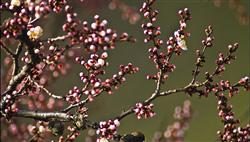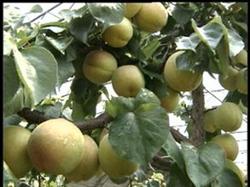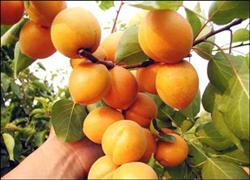Flower and Fruit Management of Apricot

1. Artificial pollination apricot trees rely on bees for pollination. However, experience shows that artificial pollination can increase fruit set by 3-4 times compared with natural pollination. Artificial pollination should be carried out in full bloom, because the apricot period is very short (5-7 days), should be prepared in advance. The apricot stalk is fragile and easy to fold, so special attention should be paid to pollination. The artificial pollination method can refer to apple artificial pollination method. Apis mellifera and wallflower bee can significantly increase fruit setting rate in apricot orchard. Apricot varieties introduced from European and American countries in recent years, such as Kate apricot and agate apricot, have high self-flowering and seed setting rate and do not need artificial pollination. 2. Water spraying at flowering stage In the area with serious sand storm at flowering stage, the stigma is often dried and covered with soil carried by strong wind, which affects the pollination effect. Spraying water at full bloom to keep stigma moist could significantly increase fruit setting rate. Water spraying was carried out at flowering stage of kernel apricot in Wofosi Forest Farm of Zhuolu County, Hebei Province, which increased fruit setting rate by 107%-137%. Adding 0.2% urea and 0.2% borax to water has better effect. When spraying water, the droplets should be fogged as much as possible. The droplets should not be too large, and the amount of water should not be too large, so as not to affect the activities of pollinators. In order to improve the market competitiveness and balance the load of apricot fruit, flower thinning and fruit thinning should be advocated in the production of fresh apricot and processed apricot. Because of the high proportion of incomplete flowers in apricot blossoms, it is not accurate to determine the fruit by flowers, so many do not thinning flowers and thinning fruits exclusively. Fruit thinning is carried out half a month after flower drop to before hard core stage. At this time, the fruit drop caused by poor pollination has passed, and the young fruit has developed to the size of broad bean (longitudinal diameter is 1.0-1.5cm). First, the diseased fruit, abnormal fruit and small fruit are all thinned out, and then the over-dense fruit is removed, so that the remaining fruit is evenly distributed on the branches. The degree of thinning depends on species, variety, tree vigor, yield and management level. The varieties with high fruit setting rate and strong bearing strength can be thinned more, and the fresh large fruits can also be thinned more; the general processing supplies can be appropriately thinned; the kernel apricot is generally not thinned except for the disease and insect fruits. Weak trees, especially trees in new years, should be more sparse, while strong trees with thick fertilizer supply can be similarly less sparse. Generally, it can be mastered at the level of 1 per 5-8cm.
- Prev

Cultivation techniques of Apricot
The main results are as follows: 1. The garden should be built on sandy loam soil with deep and fertile soil layer and can be irrigated and drained, but not suitable for waterlogged land, heavy saline-alkali land and continuous cropping land. Pollination trees should choose varieties with the same flowering period or earlier than the main varieties, and the ratio of pollinated varieties to main varieties is generally 1:6-8. Planting density plain plant row spacing 3 m × 4-5 m, in.
- Next

Technical measures to improve the fruit setting rate of apricot trees
First, select excellent varieties. Selecting the varieties with high complete flower ratio, strong self-fruiting ability, frost resistance, late flowering, early fruit and high yield as the main varieties is the key to improve the fruit setting rate. For example, Golden Sun, Kate Apricot and so on. In addition, early, middle and late maturing varieties can also be selected to reduce early spring frost.
Related
- Moge, come on! The staff of the peasant association in the producing area of cantaloupe were frightened when the crowd gathered.
- Causes and Solutions of low Fruit setting rate of Apple
- Symptoms and control measures of passion fruit virus disease
- Fruit growing lesson: how do apple orchards keep high yields?
- Can you build orchards in the mountains? What are the pros and cons?
- How to manage the coloring period of Crisson grape?
- This paper introduces the processing technology of two kinds of fig products.
- How much is a month for retired teachers in rural areas by 2020?
- How can strawberry planting increase sugar content? We should pay attention to management in many aspects.
- What are the cultivation techniques on how to improve the yield of golden fruit?

